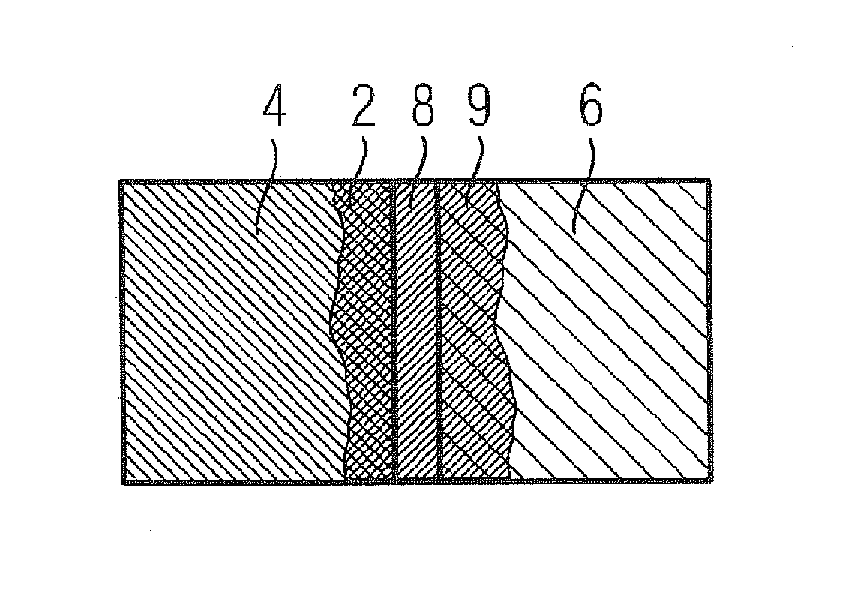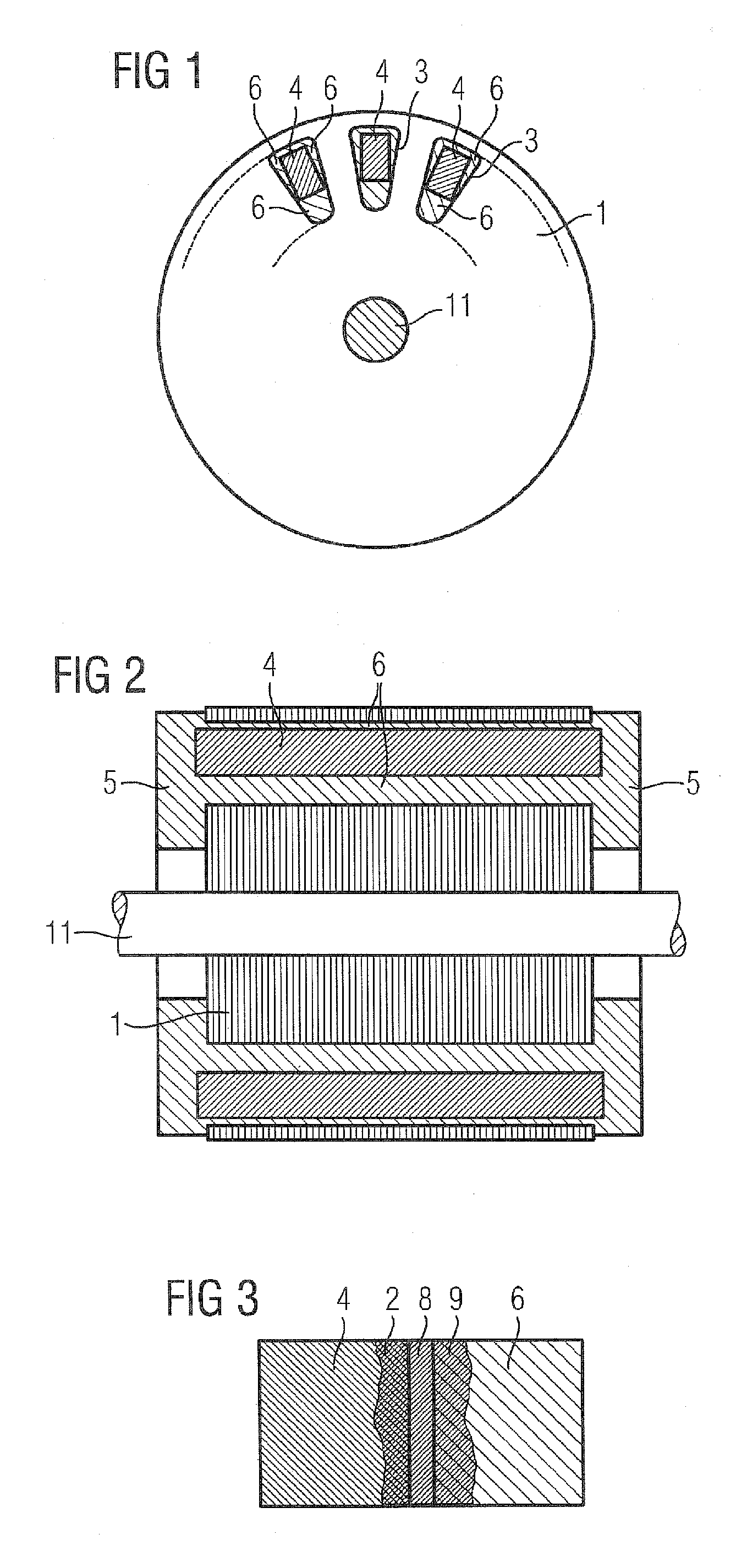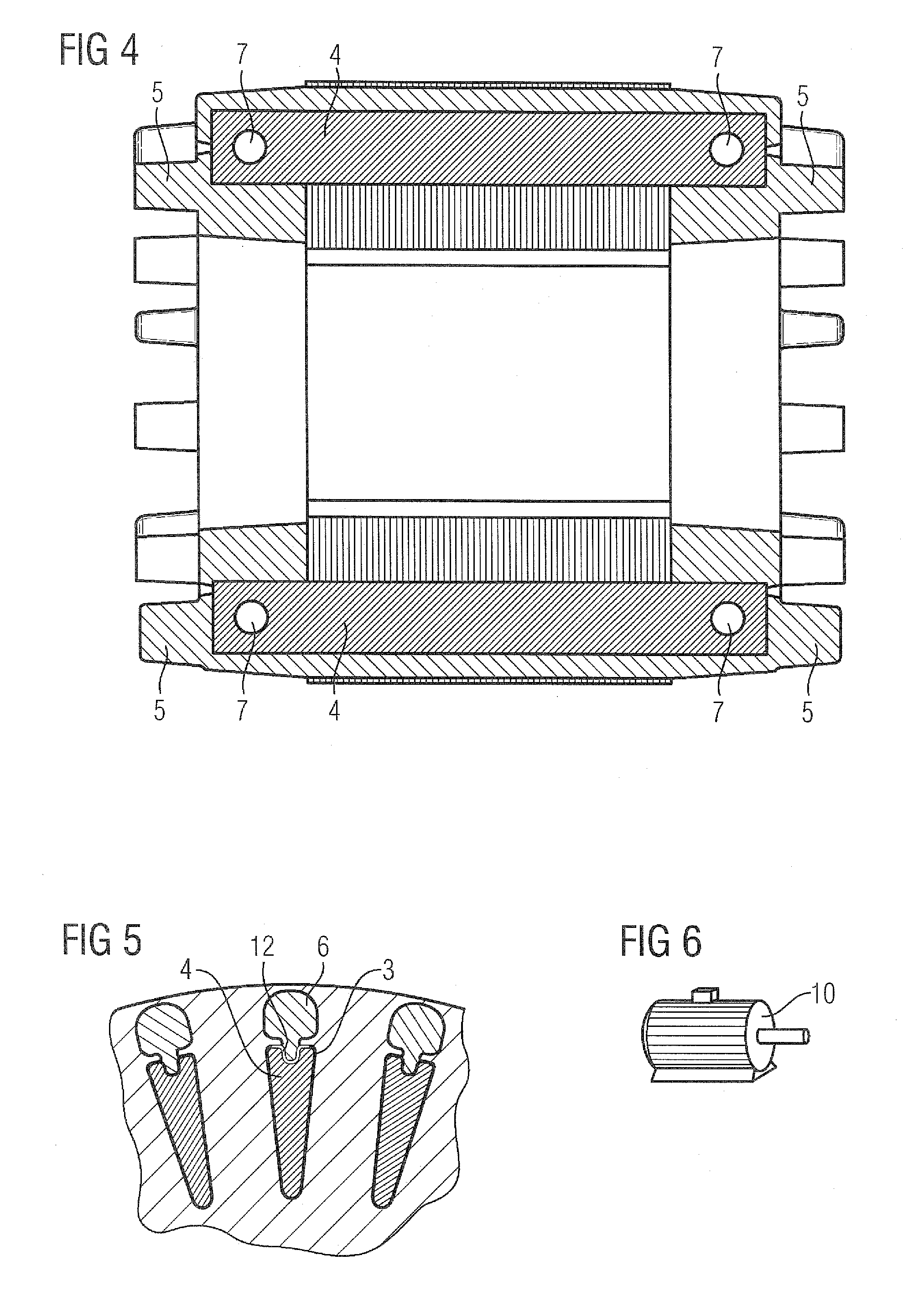Squirrel-cage rotor
a rotor and cage technology, applied in the direction of synchronous motors, dynamo-electric machines, electrical apparatus, etc., can solve the problems of impaired electrical transition conductivity between the short-circuiting rings and the rotor bars, high requirements for die-casting molds, and complex copper die-casting process, so as to achieve good electrical efficiency and strengthen the bond between the conductors and the short-circuiting rings
- Summary
- Abstract
- Description
- Claims
- Application Information
AI Technical Summary
Benefits of technology
Problems solved by technology
Method used
Image
Examples
Embodiment Construction
[0039]FIG. 1 shows an embodiment of a squirrel-cage rotor of an asynchronous machine in a hybrid construction. This figure illustrates a laminated rotor core 1 of the asynchronous machine, which is shrunk onto a shaft 11. During the production of the squirrel-cage rotor, conductors 4, which are preferably made of copper, are firstly pushed into slots 3 of the laminated rotor core 1. As can be seen, the cross section of the conductors 4 is smaller than the cross-sectional area of the slots 3. Therefore, a residual cross section of the slot 3 remains free after the conductors 4 (in the form of copper bars) have been inserted.
[0040]In order to produce the short-circuited rotor, in the next step a die-casting process is employed. In this process, short-circuiting rings in contact at the end faces with the copper bars are produced, and at the same time the still free space of the slots 3 is filled with a melt. Aluminum bar parts 6, which fix the copper bars in their position and adjoin t...
PUM
 Login to View More
Login to View More Abstract
Description
Claims
Application Information
 Login to View More
Login to View More - R&D
- Intellectual Property
- Life Sciences
- Materials
- Tech Scout
- Unparalleled Data Quality
- Higher Quality Content
- 60% Fewer Hallucinations
Browse by: Latest US Patents, China's latest patents, Technical Efficacy Thesaurus, Application Domain, Technology Topic, Popular Technical Reports.
© 2025 PatSnap. All rights reserved.Legal|Privacy policy|Modern Slavery Act Transparency Statement|Sitemap|About US| Contact US: help@patsnap.com



